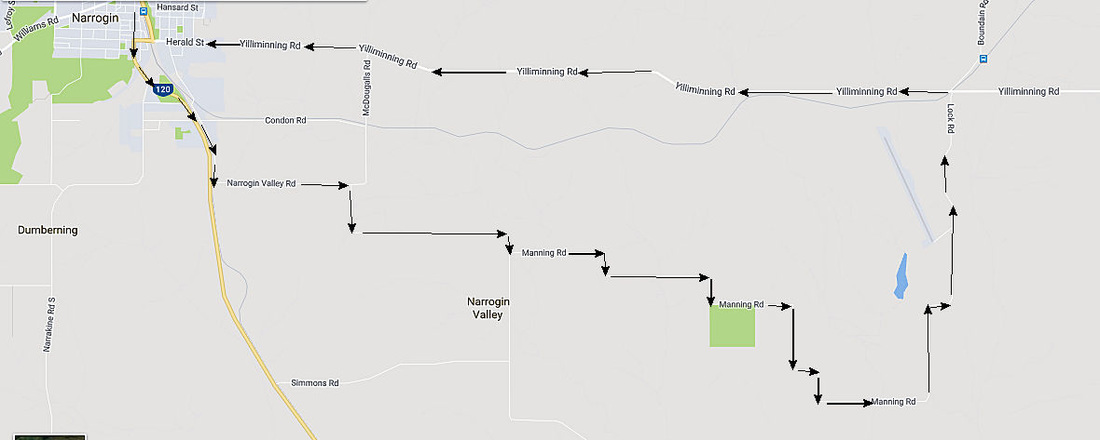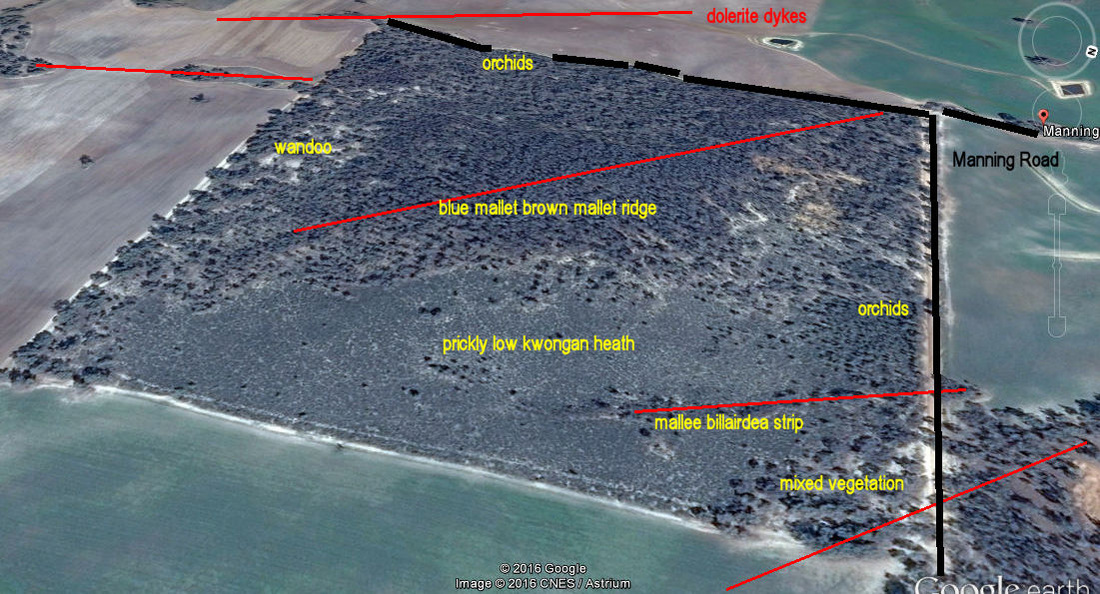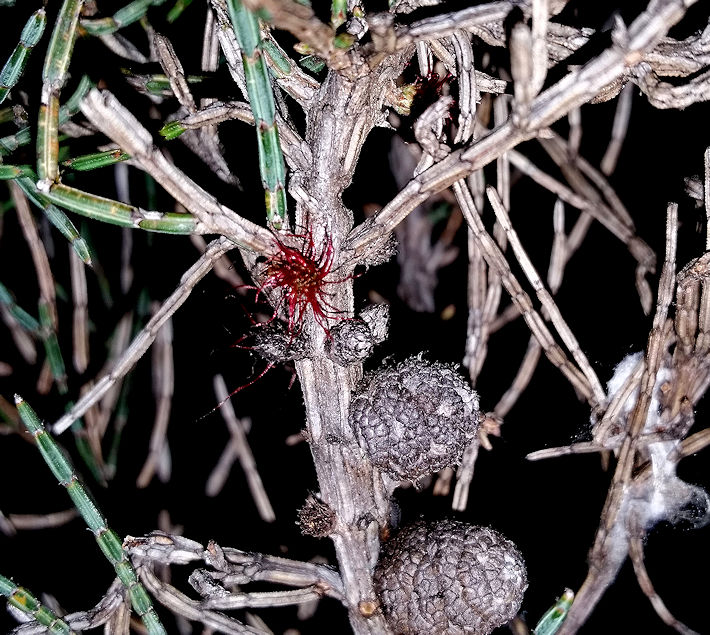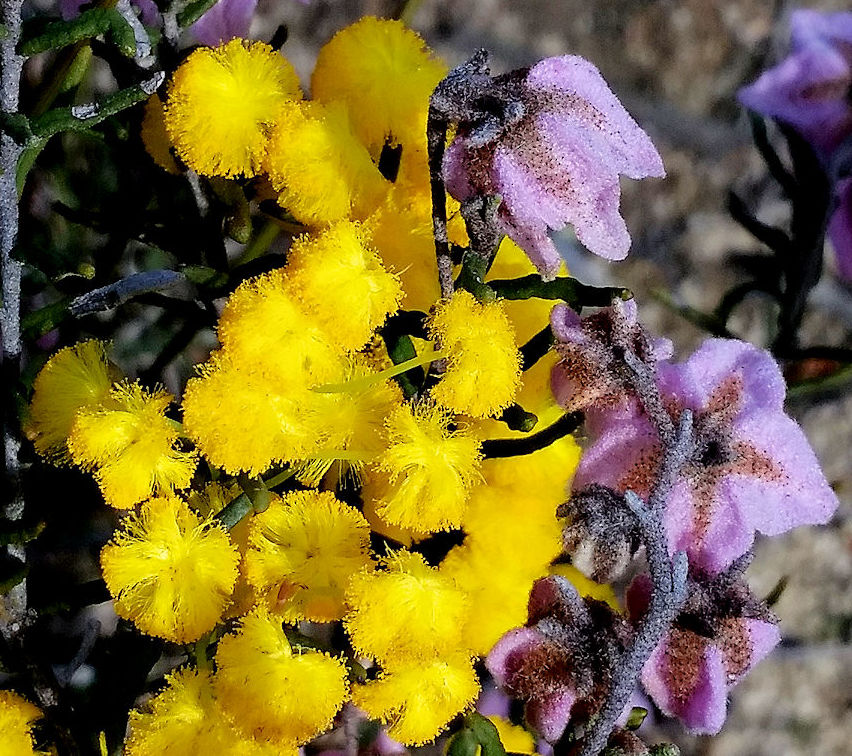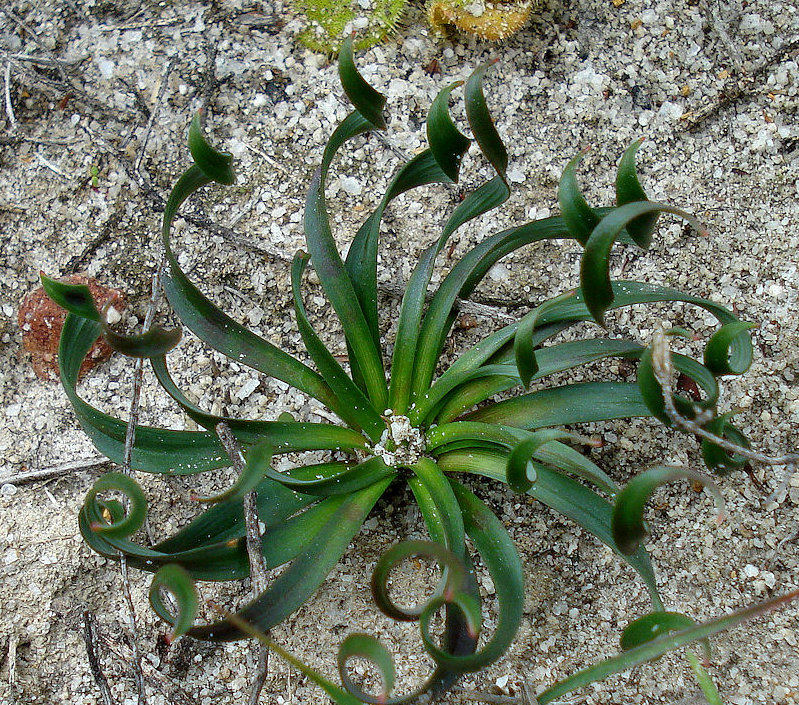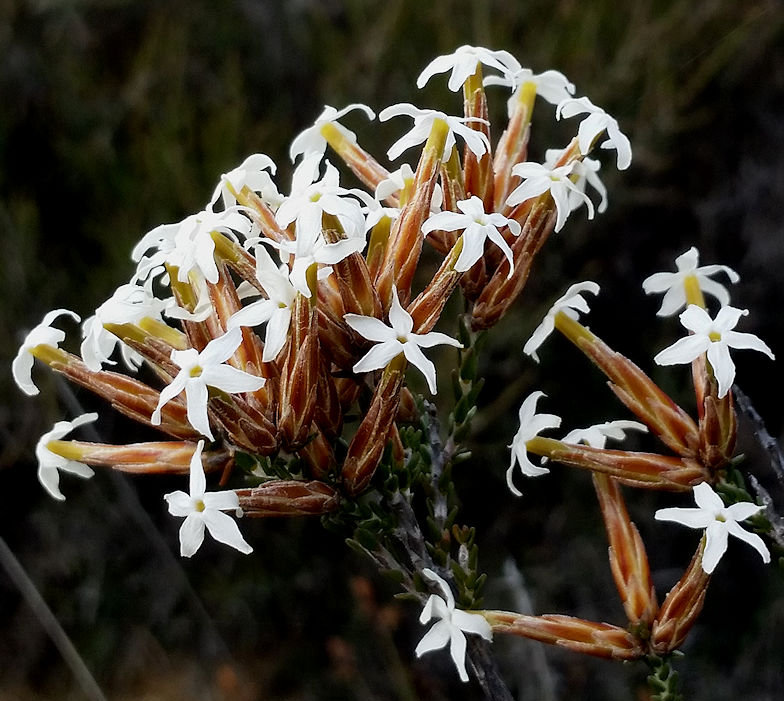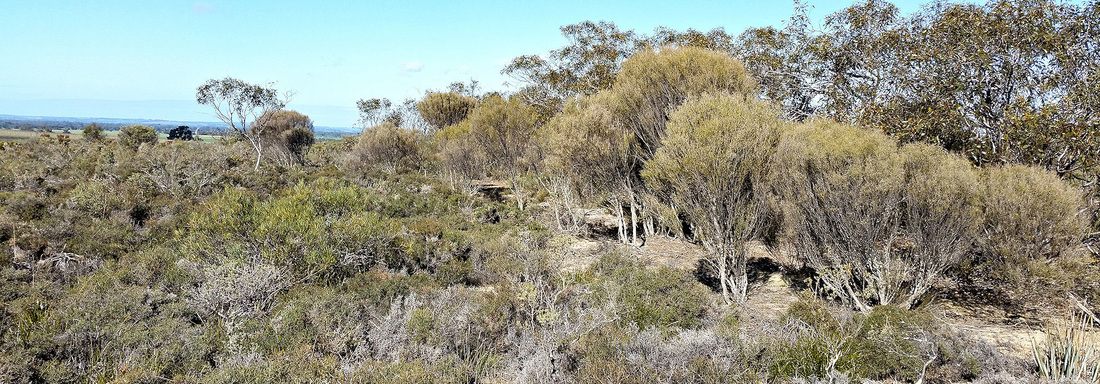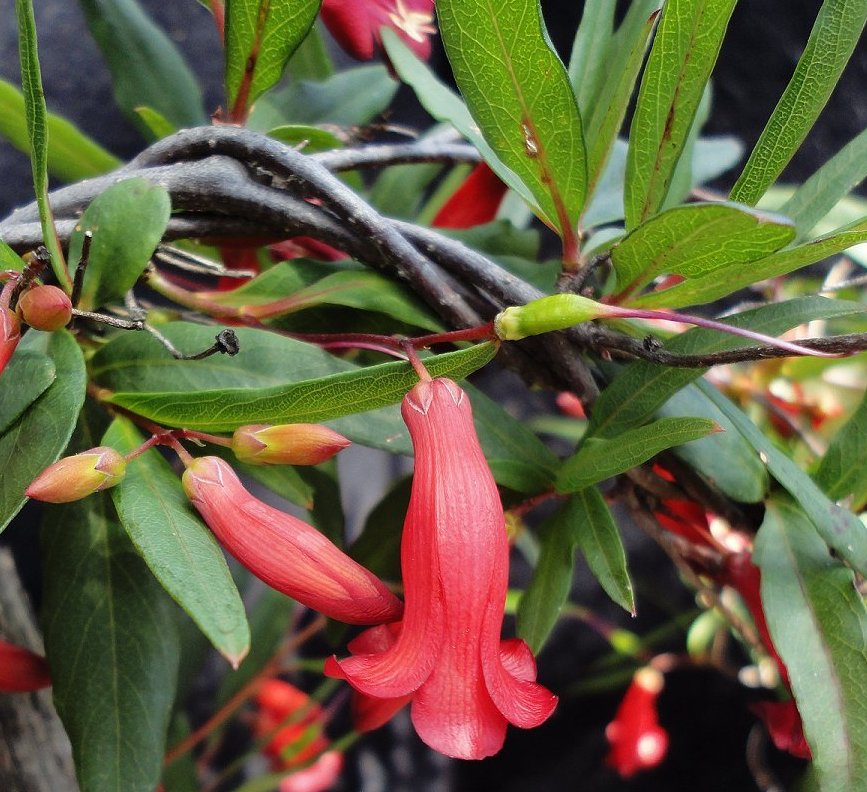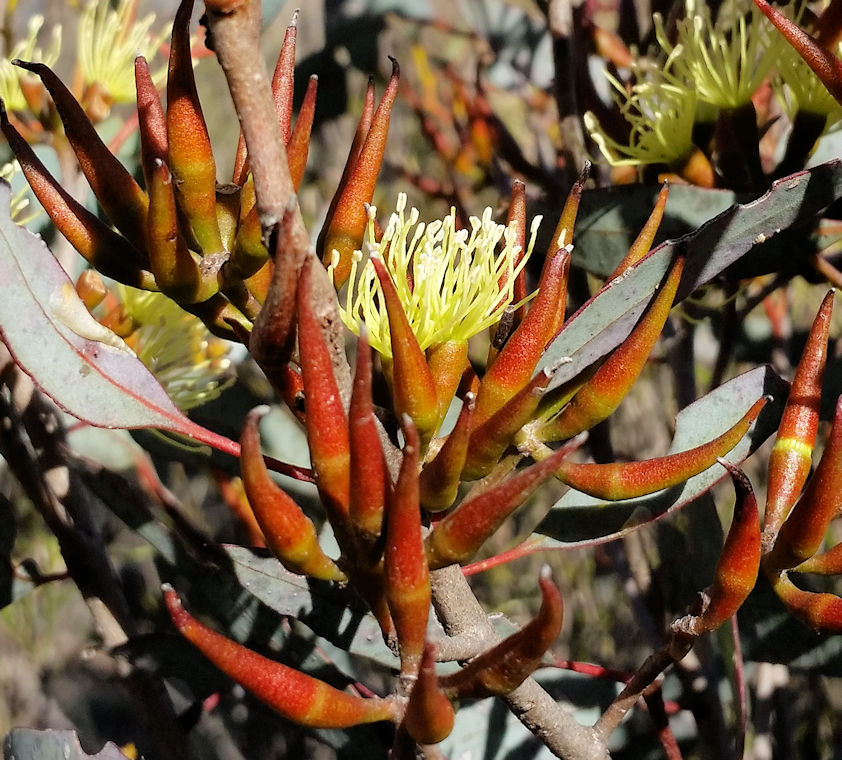This small ~45 ha reserve has unusual soils and vegetation and is well worth a visit in spring. It is a 12km pleasant drive on back roads that wind through magnificent wandoo, red morrel and salmon gum trees that have escaped the surgery inflicted on most roadside trees in the name of safety. A good way to return to Narrogin is via Lock Road through the extensive Arthur River flats.
The main ridge has dense brown and blue mallet woodland with very little shrub understory, but others have patches of wandoo, and rock sheoak that is the best place to find orchids. I saw a big patch of Cowslip Orchids and scattered Green spider Orchids recently on the western edge of the reserve.
The striking curry flower Lysinema pentapetalum apparently gets its curry powder smell from chemicals produced by a mycorrhizal fungus associated with its roots.
The best place to stop is on manning Road at the north eastern end of the reserve where there is a mixture of vegetation and wildflower types. Of particular interest is a line of mallees fringed by melaleucas that projects into the prickly heath. The vegetation overlies richer soil from a dolerite dyke that has intruded the sandy granite underlying the heath.
1. In September spectacular red flowers of Marianthus erubescens can be seen where the vine climbs up the mallees.
2. Tree enthusiasts like me like the mallees that are mallee forms of the two mallets that also occur near the corner. These are brown mallet E. astringens/ mallee E. thamnoides (shiny green leaves, horn shaped bud caps) and blue mallet E. gardneri/mallee E. pluricaulis (dull blue-green leaves long pointed bud caps).
E.pluricalis ssp. porphyria is a spectacular mallee with dull purple green leaves and bright yellow flowers that I planted in the arboretum last year and can be seen flowering now as a street tree in James Street.
| 162_foxypress_publication_august_21_manning_rd.pdf |
